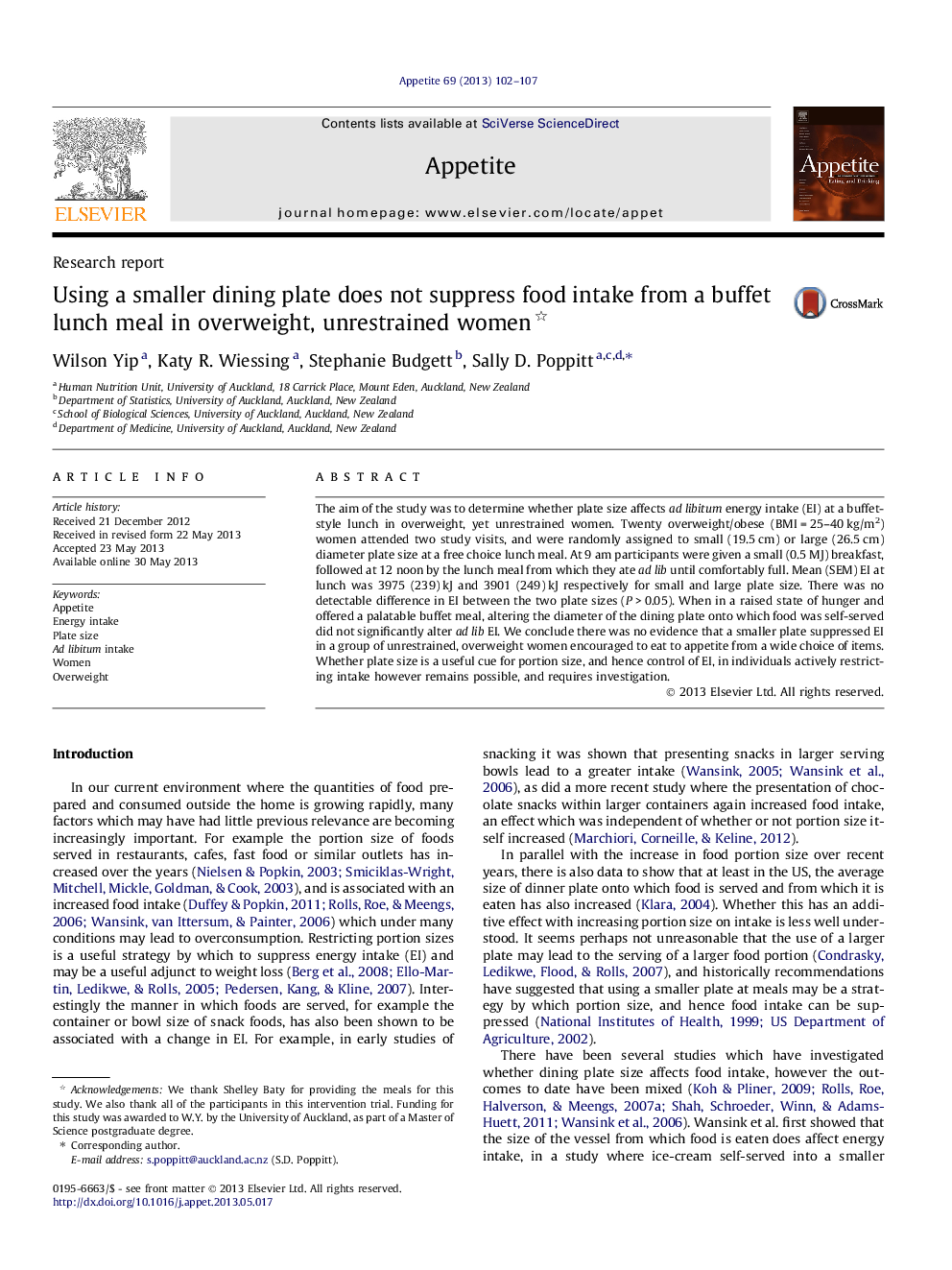| Article ID | Journal | Published Year | Pages | File Type |
|---|---|---|---|---|
| 939686 | Appetite | 2013 | 6 Pages |
•Effect of plate size diameter on ad libitum intake from a buffet lunch meal.•Small vs. large plate in overweight and obese but unrestrained, non-dieting women.•No decrease in energy intake occurred when self-serving onto a smaller plate.•Plate size may still decrease consumption in those actively trying to decrease intake.
The aim of the study was to determine whether plate size affects ad libitum energy intake (EI) at a buffet-style lunch in overweight, yet unrestrained women. Twenty overweight/obese (BMI = 25–40 kg/m2) women attended two study visits, and were randomly assigned to small (19.5 cm) or large (26.5 cm) diameter plate size at a free choice lunch meal. At 9 am participants were given a small (0.5 MJ) breakfast, followed at 12 noon by the lunch meal from which they ate ad lib until comfortably full. Mean (SEM) EI at lunch was 3975 (239) kJ and 3901 (249) kJ respectively for small and large plate size. There was no detectable difference in EI between the two plate sizes (P > 0.05). When in a raised state of hunger and offered a palatable buffet meal, altering the diameter of the dining plate onto which food was self-served did not significantly alter ad lib EI. We conclude there was no evidence that a smaller plate suppressed EI in a group of unrestrained, overweight women encouraged to eat to appetite from a wide choice of items. Whether plate size is a useful cue for portion size, and hence control of EI, in individuals actively restricting intake however remains possible, and requires investigation.
